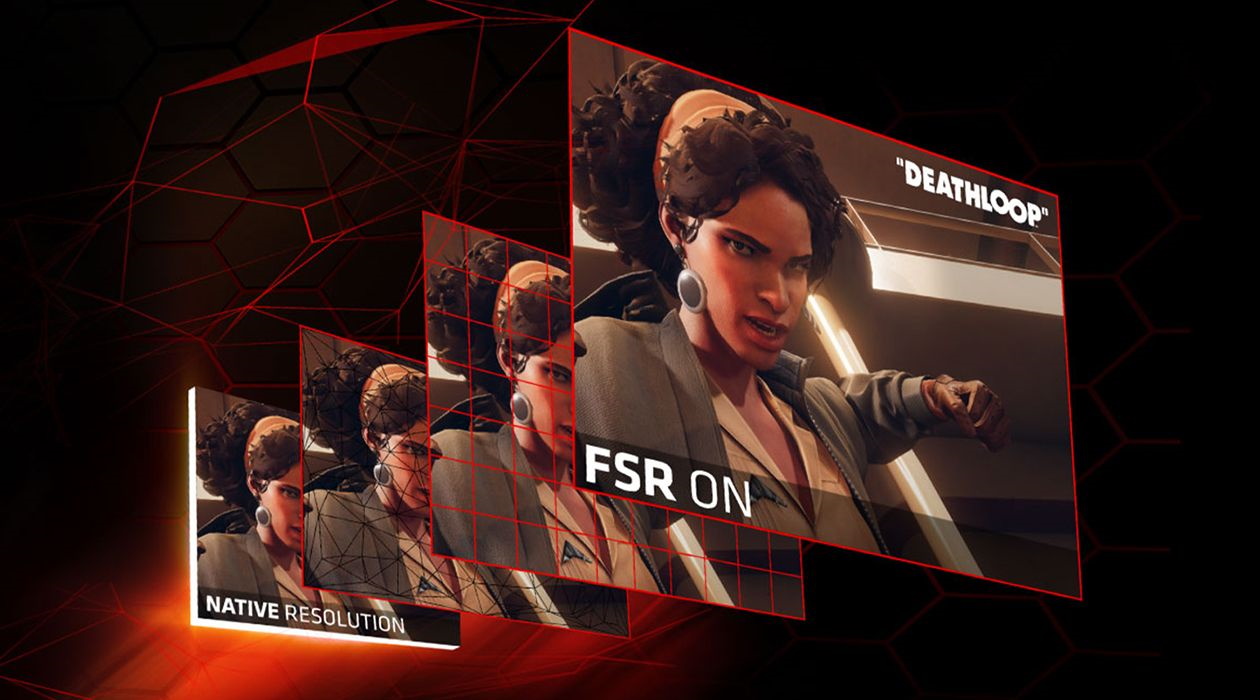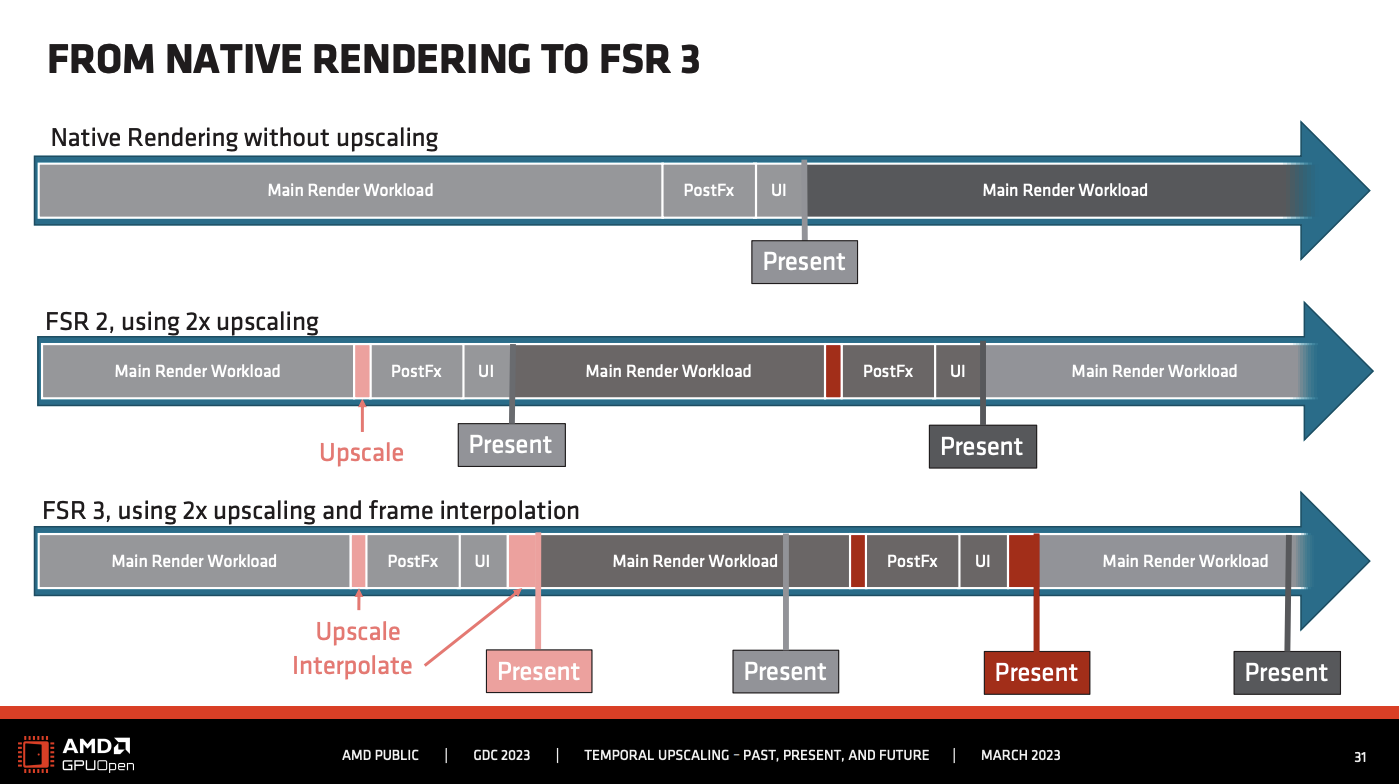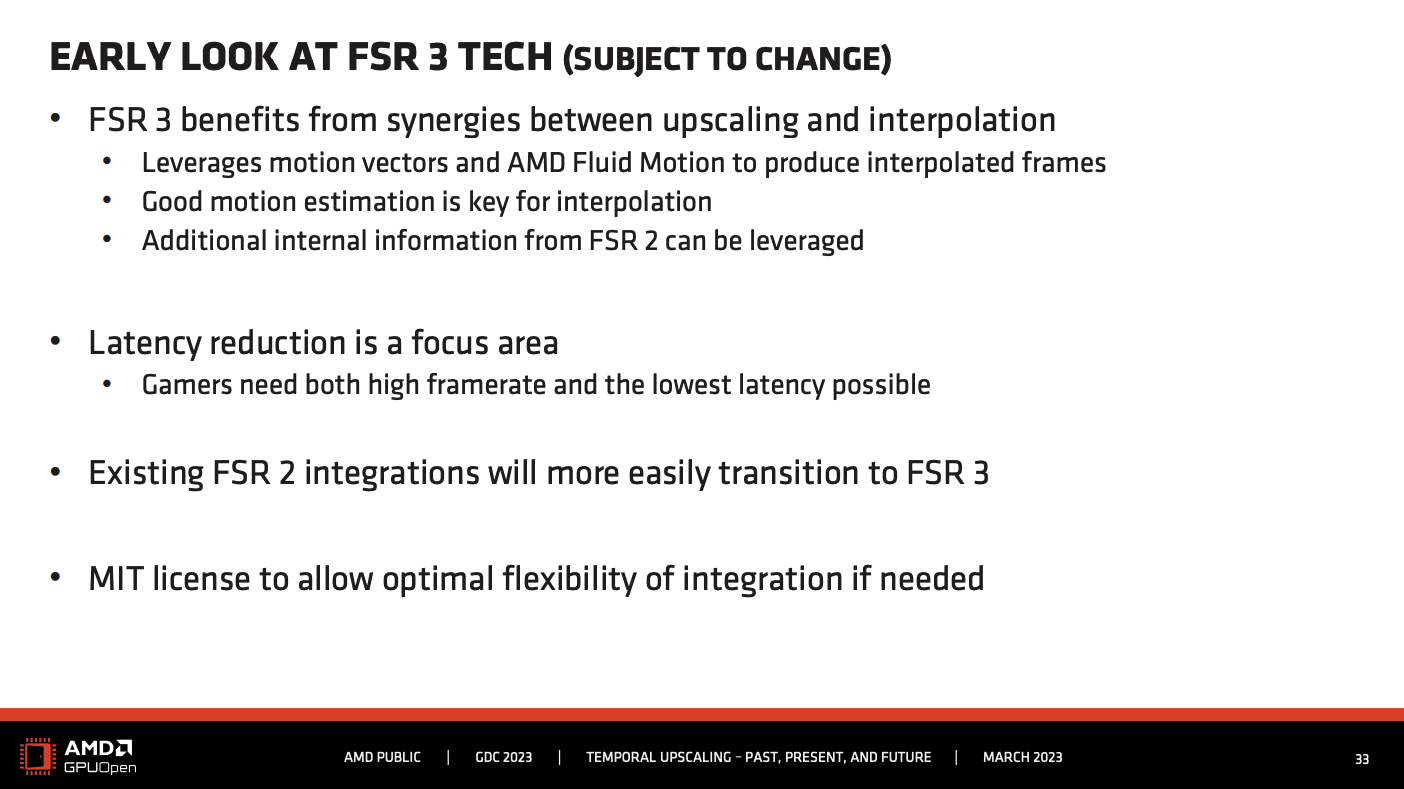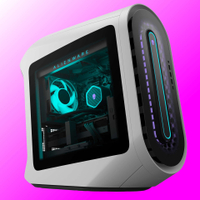AMD details its Nvidia DLSS 3 Frame Generation-fighting tech
Frame interpolation is the name of AMD's next-gen accelerating game.

For once we were right. AMD has indeed revealed the first details of its upcoming answer to Nvidia's DLSS 3 Frame Generation technology. Known as frame interpolation, the technology will arrive with AMD's FSR 3 upscaling platform. AMD hasn't put a date on the release of FSR 3 or frame interpolation beyond a classically vague "later in 2023".
The details came in a presentation made for GDC or the Game Developer Conference. AMD says frame interpolation can increase frame rates by as much as two times.
As with Nvidia's Frame Generation, the idea is to generate whole new frames in between fully 3D rendered frames to increase the overall frame rate and therefore perceived rendering smoothness.
AMD's slide deck for the event shows how frame interpolation fits into the rendering pipeline, dramatically increasing the overall frame rate. But it also demonstrates how it introduces latency.
AMD's answer to that problem is combining frame interpolation with upscaling. Long story short, upscaling reduces the latency over native rendering much more than the increase in latency due to frame interpolation.
So, combining upscaling with frame interpolation delivers both much better frame rates and much lower latency than native rendering. It's not clear whether AMD will enable frame interpolation to run separately from upscaling, as Nvidia does with Frame Generation in DLSS 3.

But the slide deck seems to imply that frame interpolation is something intended to run with upscaling rather than as a stand alone technology. "FSR 3 combines resolution upscaling with frame interpolation," the slide deck explicitly says.
The biggest gaming news, reviews and hardware deals
Keep up to date with the most important stories and the best deals, as picked by the PC Gamer team.
AMD emphasises that latency reduction is a focus area for FSR 3, explaining that "gamers need both high framerate and the lowest latency possible." AMD also says that its frame interpolation tech has been designed without any feedback loops. That means any artefacts created in frame interpolation will not persist beyond a single frame and therefore ought to be pretty hard to spot, as is the case with Nvidia's Frame Generation.
Although AMD's frame interpolation tech is a direct response to Nvidia's Frame Generation, it's not actually entirely new. AMD has offered a technology known as Fluid Motion to interpolate frames for motion video on some of its GPUs for several years.
AMD says it is leveraging that existing Fluid Motion tech, plus motion vectors, to produce interpolated frames in FSR 3.

AMD claims that supporting FSR 3 and frame interpolation will be "easier" for games that already support FSR 2. We believe that, like FSR 2, FSR 3 will be essentially hardware agnostic, meaning it will run on GPUs from other vendors, including those from Nvidia and Intel, provided they are modern enough.
That's in stark contrast to Nvidia's DLSS 3 Frame Generation, which leverages bespoke hardware in Nvidia's latest RTX 40 series GPUs, such as the RTX 4080 and RTX 4070 Ti, and therefore does not work on AMD or Intel graphics cards.
All of which means that AMD's frame interpolation sticks with its broader FSR playbook. It's a more widely compatible, more open alternative to Nvidia's highly proprietary DLSS tech.
On balance, we'd say the image quality comparison between FSR 2 and DLSS 3 is slightly in the latter's favour. So it will be interesting to see how FSR 3 and frame interpolation compares to DLSS 3.
Again, AMD hasn't put a date on the release of FSR 3 and frame interpolation. But this reveal implies it could be quite soon. In the meantime, you can peruse the whole GPUOpen slide deck, which goes into quite a bit of detail on how AMD's FSR's tech has developed over time.
Best gaming PC:
The top pre-built machines from the pros
Best gaming laptop:
Perfect notebooks for mobile gaming

Jeremy has been writing about technology and PCs since the 90nm Netburst era (Google it!) and enjoys nothing more than a serious dissertation on the finer points of monitor input lag and overshoot followed by a forensic examination of advanced lithography. Or maybe he just likes machines that go “ping!” He also has a thing for tennis and cars.


